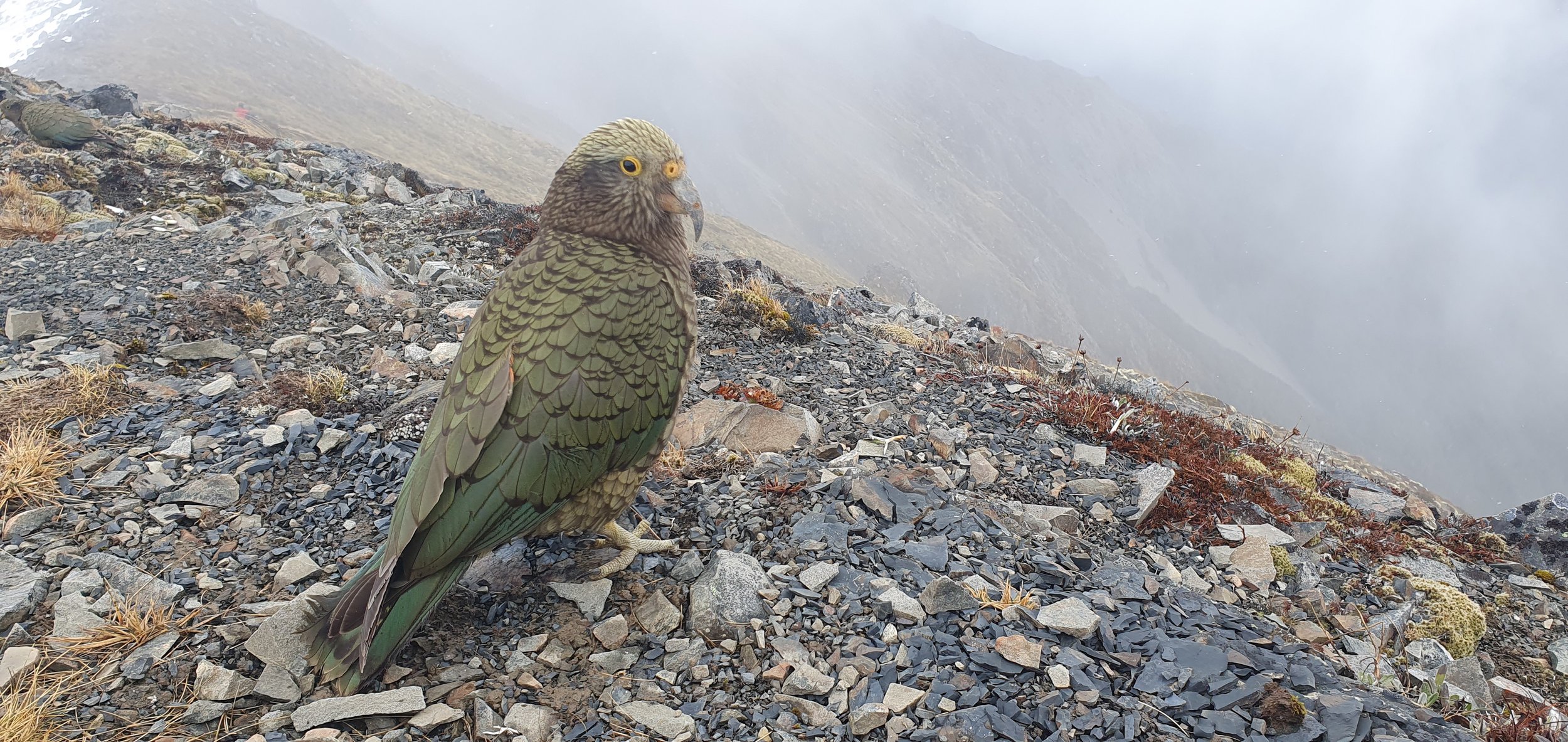September 2023
Kea News
These photos come from the kea database team. The kea were seen at Rainbow Ski Field.
Bandings help identify two juveniles - chicks from the MOR 22 breeding season ( Wallie and Ned) and another un-banded juvenile.
The photos also include two adults who are not the main breeding pair at the MOR nest.
This is exciting news!
Thanks to Stuff for the following article
Kea numbers soar in Nelson Lakes National Park
Matthew Hampson
13:00, Sep 29 2023
Kea spotted on St Arnaud Range
Trampers now have a better chance of spotting an endangered native parrot in a national park, thanks to a baby boom high up in the mountains.
Melissa Griffin, Department of Conservation (DOC) senior biodiversity ranger, said kea numbers at Nelson Lakes National Park were on the rise thanks to fruitful breeding seasons in the last couple of years.
Once a common sight in the national park, numbers of kea there had dropped to the point where “people didn't see them any more,” Griffin said.
“There's been a really long history of working with kea at Nelson Lakes ... and from talking to people also, who have been coming to this place for their whole life, there used to be flocks of kea,” she said.
“In the last probably 10 years, it kind of happened really suddenly, kea numbers just dropped off, and people didn't see them any more ... there were a few adults, but they weren't getting their chicks away. There was a lot of predation at the nests, so it was just really sad.”
Since 2021, efforts to monitor nests and control predation around nesting sites have been given a boost by support from the World Parrot Trust and the New Zealand Parrot Trust.
“Kea play an important role as seed dispersers in subalpine and alpine environments. Therefore, an increase in kea numbers in the area can have an important effect on plant communities,” said Luis Ortiz-Catedral, World Parrot Trust Oceania regional director.
The 2021 breeding season then saw six kea chicks fledge from two mothers at Nelson Lakes. And last year, another six chicks successfully left their monitored nests
“That first year when we got three chicks from each nest away, it was the most lovely moment, kind of like all that hard work had paid off,” Griffin said.
“Our rangers are climbing up very, very steep, rugged terrain to get to where these birds nest, and in all conditions, and to know that we had three birds from each of those nests, that the pair fledged all of their chicks, was such a huge thing.”
Based on reported sightings, she estimated there could now be around 25 kea in the national park.
“We always knew there’d be adults around, but we hadn’t been seeing juveniles, and we knew that we weren't fledging good numbers to start building that population," she said.
“But last summer and in the last year or so, members of the public have actually been seeing juveniles out while they're out tramping in Nelson Lakes, which is kind of a big deal when people haven't seen that for a number of years.”
Griffin says there are around 40-50 known historic kea nesting cavities at Nelson Lakes National Park, some which haven’t been used in more than a decade.
Live capture traps purchased through fundraising by the Kea Conservation Trust helped protect a monitored kea nest in the Rainbow Conservation Area from feral cats last summer. Nine cats were caught in the traps.
“On the eastern side of the Southern Alps, kea numbers have dropped off down the whole country, and part of that is thought to be feral cats,” Griffin said.
DOC also created a ‘Where’s Wally?’ type quest last summer to find a juvenile kea named Wallie that fledged in December. The parrot was given the name after proving hard to spot in the nest.
“For a long time, there were only two kea chicks seen in footage from cameras focussed on the entrance to the nest cavity, then randomly a third chick started to appear. It was something of a mystery bird,” Griffin said.
Distinguishable by the letters CW on yellow on a blue band, Wallie had been spotted several times in 2023.
Breeding seasons typically start in July, and kea chicks fledge around Christmas, and this year, at least one female has been spotted sitting on eggs in her monitored nest cavity, Griffin said.


